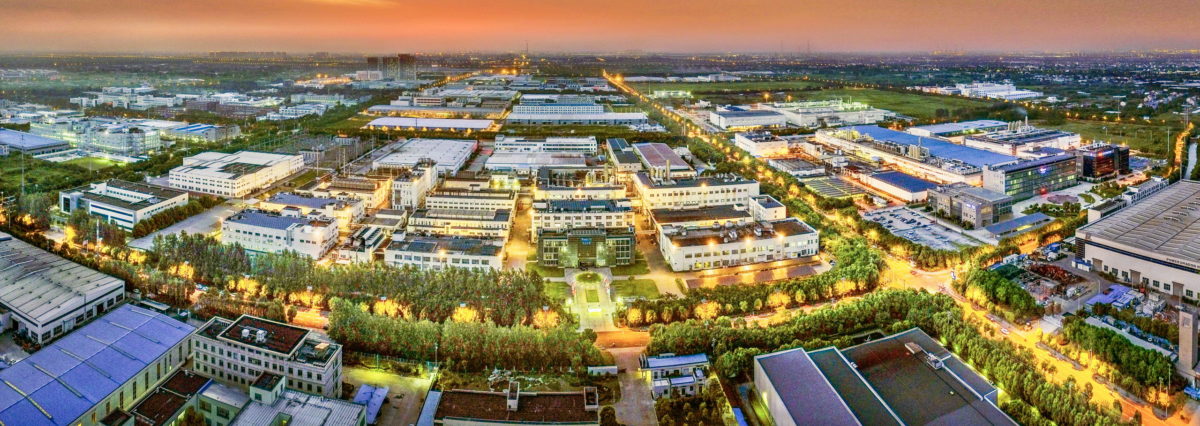pv magazine: Trina Solar has been awarded the label of being 100% bankable by Bloomberg NEF in 2021For the sixth time. What does this mean for you?
Dr. Zhang Yingbin, Trina Solar’s head of product strategy and marketing: The bankability index granted by BNEF can be shown to finance institutes when it comes to securing finance for solar projects. In general, it shows the creditability of the product and the company. There are several key points that need to be checked for the bankability evaluation. First is the financial status of the company. The second is its reliability, including the specifications and product warranties for our PV panels. And then there is the adaptation to other components, ease of installation, and added value for customers.
The 100% classification means every person Bloomberg NEF interviewed gave a 100% positive reply to questions on our PV products, brand, customer service, and financial status. We are proud to say that it’s really a great achievement to win 100% bankability six times.
Are there other indexes that evaluate the reliability of PV modules?
Yes, we are also in the process of having our 210 mm-based large-format modules evaluated by PVEL and the Renewable Energy Test Center (RETC). From the initial results, we have seen very good scores for mechanical load, thermal cycles, PID, cracks, etc.
What I want to emphasize is that these product evaluations contain multiple levels. First, our R&D team conducted internal evaluations during the process of prototype design according to IEC standards. Then we sent our modules to authoritative testing organizations like TÜV Rheinland for a more comprehensive evaluation and to receive certifications from IEC and/or UL. We completed this around Q1 2021. The third step was to go to PVEL and RETC, which are authoritative and recognized by the financial markets, to pass their enhanced tests – three times or even higher than normal IEC standards.
How do your customers respond to the 210mm PV modules?
As our best quality product, with enhanced warranty conditions, many of our customers have been very accepting of our 210mm modules. So far, we have shipped over 16GW of these products. Of course, there are some customers who are still on the sidelines and they need time to appreciate the benefits of these new sizes; but, I believe it won’t take long.
What has exceeded our expectations is the fact that the new 210 mm-based panels are not only popular in the utility-scale PV segment, but they are also being adopted for other types of PV. For example, we have shipped them to Singapore for floating PV projects, to the Netherlands for use in agrivoltaic projects in rural areas, and for many C&I distributed PV on rooftops of factory buildings. This is due to our wide power portfolios, with our 210 mm-based modules ranging from 410W to 670W.
What is Trina’s integrated delivery solution and how does it support your new products?
The integrated delivery solution is a unique innovation by Trina for our customers. From the perspective of the installer, we take every aspect of the entire shipping process into consideration and provide a solution, guidelines, and instructions for them to better utilize each module. For example, most conventional PV manufacturers only care about the sales of their PV modules. We are involved, however, in their packaging, uploading onto containers, shipping via ocean or land, their inventory and transition, their unpacking and transportation to the site, and their final installation on supports or trackers, etc. The entire process is formalized with a white paper and corresponding video so that our customers can follow and proceed with the highest efficiency and accuracy to save costs, reduce damage, and increase profits.
How do you respond to concerns about the mechanical load of larger format PV modules?
First, I want to say that Trina Solar is very confident about our products, and we would not launch any that were immature or defective. In terms of why the mechanical load of 210mm format modules is not an issue, I provide the following explanation: Trina Solar has utilized a series of technologies on the new panels to improve their mechanical specifications. For example, we use non-destructive cutting to reduce hidden cracks and improve the mechanical load of the solar cells. And we use strengthened frameworks on the panel which has improved mechanical strength. We have further increased the thickness of side C from 1.4mm to 1.65mm. And we have provided improved solutions for screws and shims for connection points. Based on our calculations, we have improved the total mechanical load by at least 27% with just a 20% area increase.
This is what I want to emphasize: we improved the mechanical load capacity with our technical injections. Steel is much heavier than wood, but ships made of steel can carry much more than those made of wood.
Why does Trina Solar release white papers for its PV inverters and trackers?
This is due to Trina’s belief in cooperation with partners. The 210 mm-based large-format PV modules generate bigger currents which inverters need to support. The inverter white papers tell our customers that there are over 200 inverters from 21 manufacturers (covering 90% of inverter brands) that are ready to support the new PV modules. The same goes for trackers. Our tracker white papers list over 30 trackers from 14 major manufacturers around the world that can support our 210mm panels. We also have a service on our website for customers which shows them which inverters and trackers are compatible with our different modules. That’s a powerful tool for our customers to make the right selection.
What will be the next-gen solar cell technology: TOPCon or HJT?
We believe both technologies are very promising, and Trina Solar has invested in technical research for both. When will either of them go into mass production, on a GW scale? I believe this depends on investment and processing costs. The general cost level determines the timelines for mass production. When the cost level begins to compete with current products or go even lower, the breakthrough point will come. Trina is well prepared for the future and is just waiting for the signal.
What new products and solutions will Trina Solar launch in 2022?
Our 2022 product lineup comprises our 210 Vertex modules, and the latest N-type modules. We will also keep optimizing products to bring more value to the market.
Popular content
When did Trina Solar start marketing its super-high power PV modules in the Asia-Pacific region?

Todd Li, President of Trina Solar Asia Pacific: We have been promoting our products in Asia-Pacific since their global launch. The 600W+ module was introduced to the market in July of 2020, and the 670W+ was launched in March 2021. Because local product certification requirements vary in different countries, actual shipments occurred late, however.
How have these products been accepted by the market?
The acceptance of our super-high power modules has been very high, accounting for around 80% of our total shipments in Q3 2021. Among them, the majority of the orders were for the newly launched ultra-high power Vertex 600 W+ series of modules.
Why is this product so popular with end-users?
I think there are two reasons. First, the new ultra-high power module has a lower levelized cost of electricity (LCOE). Secondly, they can produce more electricity within the same area of landscape. Because the ultra-high power module creates more value for customers, it has eventually brought more success to us.
Many people are concerned about the weight of the modules. What do your customers think?
When customers bought these products for the first time, some of them might have had concerns about shipments and installation due to their bigger size and weight. Trina Solar did a lot of work to improve the shipment and logistics processes, as Dr. Zhang Yingbin explained. The feedback we have received indicates that there is no big difference to the whole process compared to smaller modules in terms of shipment and installation, and after they have completed site work one or two times.
How have the larger power modules performed in the distributed PV market?
The distributed PV market, especially the large commercial and industry (C&I) rooftop segment, is very important for Trina Solar and I believe it will be very good to utilize our ultra-high power modules there. Considering several fast-growing countries in this region like India, Thailand, and Vietnam, which need more energy supply for their industrialization, sales growth of our ultra-high power modules is expected in 2022.
Three years ago, we realized the importance of distributed PV, which will be of “higher value” compared to utility PV. We then made a business transition from focusing on the utility sector to focusing on distributed PV. Now around 70% of our revenues in the Asia-Pacific region come from distributed PV.
How have the price rises in the solar supply chain affected your customers’ installations?
The rising costs in the supply chain are totally out of the control of the PV module makers. For Trina Solar, what we can do is to try to keep low balance of system (BOS) and LCOE costs by implementing innovative technologies to new module products. Distributed PV customers are less price-sensitive, and they are more willing to adopt new technologies to reduce costs. That has been proven in our 2021 sales performance. Compared to our competitors who are more involved in utility-scale PV, Trina Solar has been least affected.
What are the major markets for Trina in this region?
In the Asia-Pacific region, excluding China, India is our biggest market, followed by Australia. Some other countries will shift market positions from time to time. For instance, Vietnam was a shining star in 2020. According to our sources, their solar installation rates in 2021 were much lower than in the previous year. Thailand is another example: this country ranked top several years ago, but now installations are far behind the other leading countries. However, with a common target to reduce carbon emissions, the region is expected to increase solar installations in the coming years.
How do you expect the markets in this region to perform in 2022?
We expect growth of more than 20% in solar PV installations.
Which countries would you rank the highest?
I think the Philippines, Indonesia, Taiwan, and Vietnam will be four very promising markets, looking at their current growth rates.
This content is protected by copyright and may not be reused. If you want to cooperate with us and would like to reuse some of our content, please contact: editors@pv-magazine.com.


Any plans to extend your sale in Africa? I did not see where you plan to grow your market beyond the Asian markets? I would very much like you to think about growing your company in Africa especially Liberia where there a great need for solar energy.
I not so sure about the resellability of the 600 watt panels… As you know the overstocked or the sell-off of these panels after the company is done with them goes to the residential customers that wants to buy them cheap. A 600-watt panel is huge and the placeability of these panels would have shrunk to where they can be placed!!!